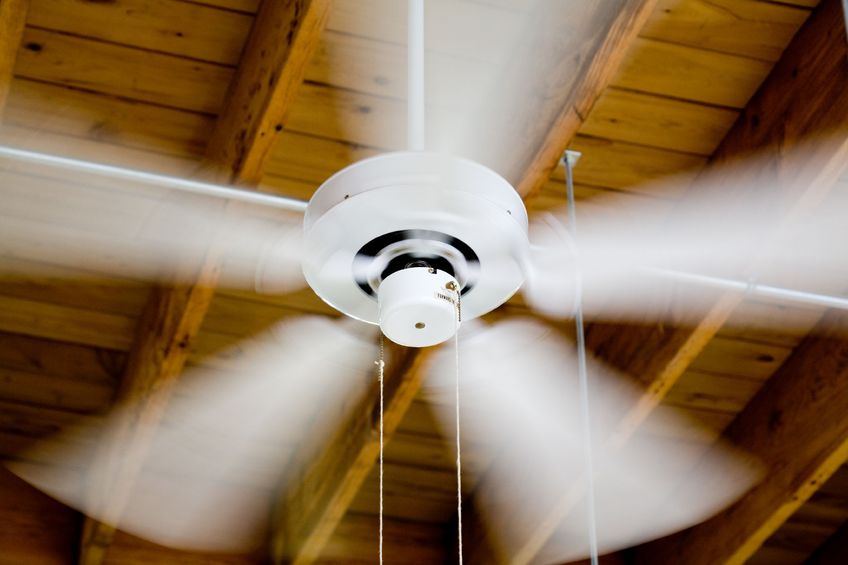If your ceiling fan only sees action during the summer months, you are not taking full advantage of this energy-saving appliance. Although a fan is mainly used to cool a room, it is also effective as a heating tool. The key to using your fan in the winter is changing its rotating direction. Instead of forcing air down to cool, it is forced up against the ceiling to drive warm air down to your living area.
Heat Rises
As with a hot air balloon, warm air rises above colder air because of basic physics. Hot air expands, allowing air molecules to spread. Because these molecules take up more space, the warm air is effectively lighter than cold air. During the winter, warm air in your home remains near the ceiling, keeping the main living area cool with dense cold air. You want to use your ceiling fans to bring this warm air downward.
Creating An Updraft
During the summer, the ceiling fan rotates in a counterclockwise direction. Change the fan’s speed to low and alter its direction to clockwise. The blades’ new direction pulls cool air directly up from the fan’s center point and out to the ceiling. Warm air above the fan is thrust to its perimeter, strikes the walls and moves down to floor level. Because of this hidden warm air, you can turn your heat system down a degree or two to save on energy costs. It is possible to save as much as 15 percent off your next bill with strategic fan directions.
Activating Your Fan
Many ceiling fan models have a button setting on a wall control or remote that changes the fan’s direction. If you cannot find it, consult your owner’s manual for specific directions. For older fan models, look for an toggle switch on the fan’s motor. Flip the switch and the fan changes direction automatically. Use caution when you access the toggle switch. Do not let your head or hand strike moving blades. Keep the fan turned off while you toggle the switch. Turn the fan back on when you are clear of the blades.
One Exception
If you have a home with vaulted or high ceilings, a fan directional change does not make much difference in a room’s temperature. The air flow cools off too quickly as it moves from the ceiling to the floor. You may need to heat these rooms with your furnace rather than using the fan technique.
Your ceiling fan helps you save on both cooling and heating bills. Pay attention to the rotational pattern and note the room’s temperature difference throughout the year. By using the fan correctly through the seasons, you benefit with a more comfortable indoor temperature without a high price.
Post Author: andyc.




